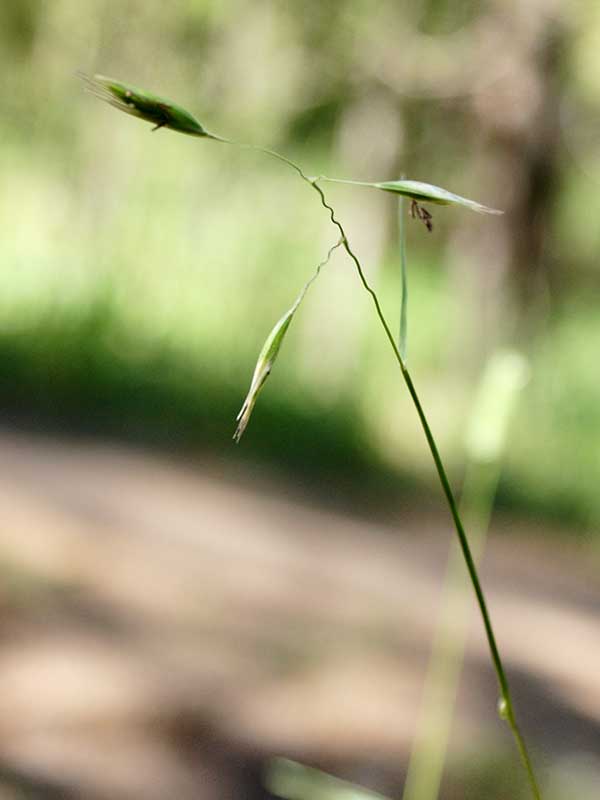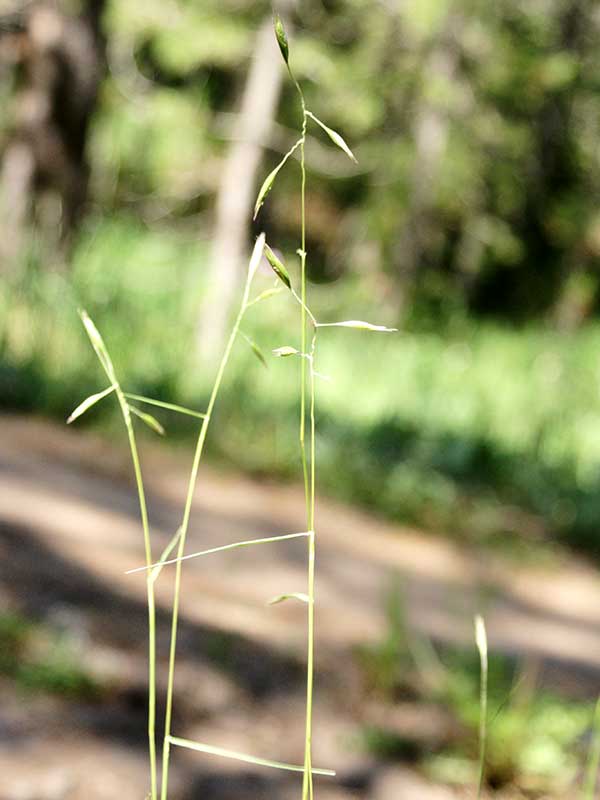Danthonia californica / California oatgrass
- medium-sized, cool season bunchgrass
- florets widely spaced with long stalks on an open panicle
- may have flowering stems that appear wiry and crinkled
- when flowering, stamens are purple
Also known as: California danthonia
Synonyms: Danthonia americana
Note: grasses have a nomenclature all their own, much different from that of dicots. A good resource/slide show from the University of Idaho on grass structures is available here.
Oatgrass is a slow-establishing but long-lived, cool-season perennial. It is a low- to medium- sized, tufted bunchgrass native to western Canada and the United States. The stems (culms) separate at the lower joints at maturity. The leaves are short and flattened and grow in tufts at the plant base but they also grow attached to the culms. The latter may be in-rolled to reduce transpiration and have distinct, spreading hairs where they join the stem.
The dense fine roots of California oatgrass stabilize the soil surface against water and wind and help the plants withstand regular disturbances, e.g. mowing, grazing or fires.
The oatgrass inflorescence is a loose and open panicle. Spikelets appear between May and early July and are 1 to 3 inches long. Each panicle has only 1-6 broadly spreading spikelets. The visible characteristic, to me, is the sparsity of the spikelets and the wiry stems to which they are attached (see gallery photos). For the more apical florets in each spikelet, the stamens are purple-ish. The basal florets may never open, but still produce seeds through self-pollination.
Oatgrass seeds mature in late July or August. Each has an abruptly bent awn up to ½ inch long. When mature, some of the terminal seeds will fall from the plants. This is called “shattering” although the seeds themselves are fine. Then, the remaining culm will separate at the basal node. These “disarticulated” stems can wrap around legs of passing animals to further disperse the seeds.
California oatgrass is not generally common because of its slow establishment. However, it can be found in woodlands, scrublands, grasslands, moist open sites and meadows (including pastures).
| Color | |
|---|---|
| Family | |
| Inflorescence size | |
| Inflorescence type | |
| When? | |
| Where? |

